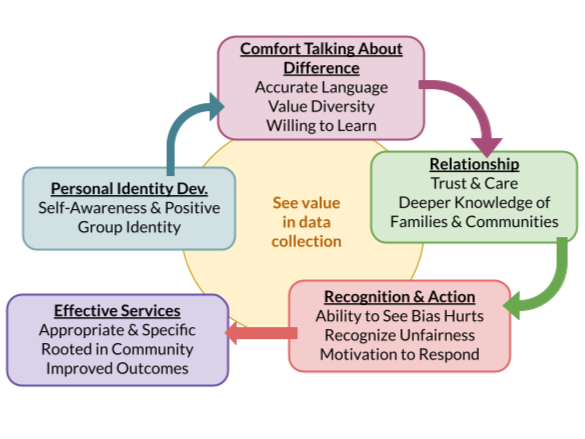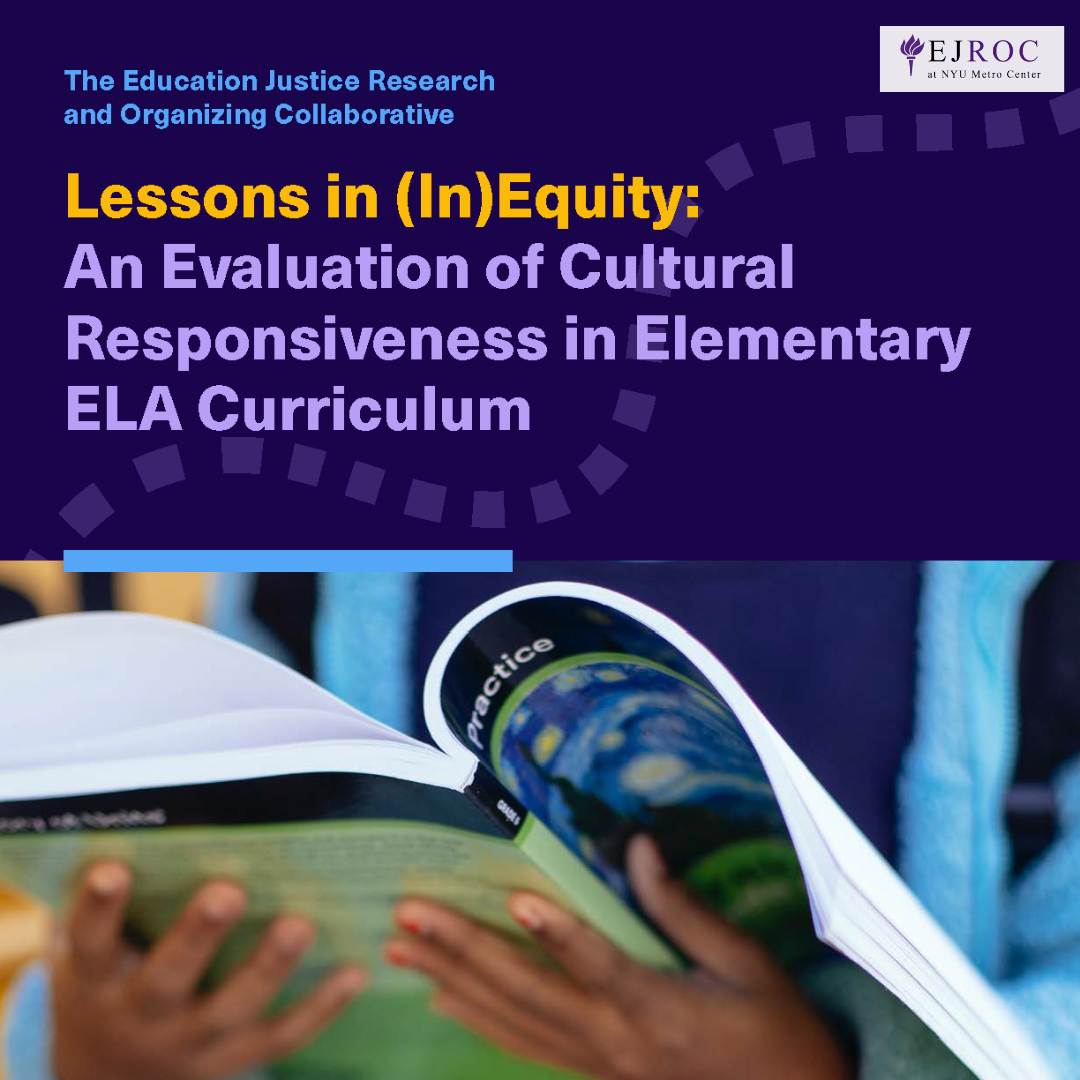Anti-Bias Child Welfare & Race Data Collection Project
Impetus: MDHHS had inaccurate, incomplete race data because workers were uncomfortable discussing racial, ethnic, cultural, and religious identities. In addition to poor data, workers’ discomfort discussing these topics also meant clients were not being directed to appropriate services, familial connections, and relationships were inauthentic.
Response: Develop a race data collection policy, support policy implementation with training to increase workers’ understanding of the value of, and comfort with, discussing race, ethnicity, culture, and religion. Pilot in three counties to assess and adapt prior to statewide rollout.
Results: 85% of workers found the content useful, 90% reported commitment to applying the content, and one pilot county reported 100% updated, accurate data for clients.
“[This project] helps…us look at families in their totality, rather than just the event that brought them to us.”
-Wayne County participant
“When the CPS worker implemented the questions prompted from the race data interview guide, they were able to have an open conversation.”
-Ingham County participant
Truth, Racial Healing, & Transformation
Impetus: Inequity in educational access, outcomes, and achievement in Kalamazoo County, disproportionately low numbers of BIPOC educators, and high rates of educator burnout and turnover.
Response: Multi-pronged approach including community-building, direct provision of resources, networking, and training for educators to improve their capacity to offer students equitable, culturally responsive education to improve student-teacher relationships and educational outcomes for marginalized children.
Results: 33 educators from 6 Kalamazoo County school districts successfully completed the Racial Equity Cohort and implemented equity plans in their districts ranging from updating classroom materials to revising staff and student handbooks, implementing training on effective inclusive instructional strategies, and developing partnerships with families. Nearly all participants have continued and expanded upon the initiatives in their school buildings and/or districts.
A multi-pronged approach:
Identify and engage diverse stakeholders
Set strategic goals for educational equity with input from community members
In collaboration with schools, youth, and community organizations, determine priorities
Assess proposals for use of TRHT Education Design Team funds and personnel
Allocate funds
Implement programs focused on youth voice, family engagement, policy change, educator preparation, educator supports, and community building
Program Examples:
Racial Equity Cohort: A collaboration with WMU, Kalamazoo Community Foundation (Truth, Racial Healing and Transformation Education Design Team Leads), & KRESA to create the Racial Equity Cohort to develop in-house racial equity trainers for school districts in Kalamazoo County. Participants studied Culturally Responsive Education, assessed curricula and policies from their buildings, and developed plans for addressing issues they identified with the support of the Design Team Leads. The Cohort also built community amongst educators with similar goals of improving educational equity, and equipped schools with trained teacher-leaders who could support colleagues and facilitate professional development.
BIPOC Educator Affinity Group: Allocated Education Design Team funds improve wellness and reduce turnover and burnout amongst educators of color by fostering community and offering wellness supports.
Teacher Wellness: Allocated Education Design Team funds to support teachers’ wellness by providing a rotating supply of wellness aids including gift cards, classroom supplies, instructional resources, and resources for stress reduction.
Culturally Responsive & Sustaining Education
Impetus: Students with diverse identities and needs tend to demonstrate lower academic achievement and engagement with schooling.
Response: Conduct an evaluation of the three most commonly used curricula across the country in k-12 schools. Assess the representation of the materials including guidance provided to teachers for not only whether or not diverse identities are represented, but also how they are presented, talked about, and what messages students glean from the content using an evaluation tool created by NYU’s Education Justice Research and Organizing Collaborative.
Results: Fellows from around the country participated in research for the study and completed training to become affiliate facilitators of the evaluation process. Successful completion required hosting a curriculum evaluation event, and affiliates are able to continue using the tools and facilitating evaluations in their communities to begin the process of revising and recreating curricula that celebrate and sustain diverse cultures while also presenting instruction that reflects accurate, inclusive content, funds of knowledge, and diverse epistemologies.



